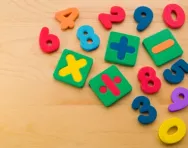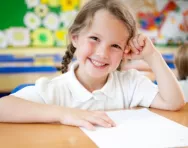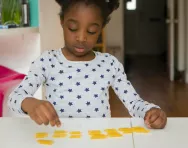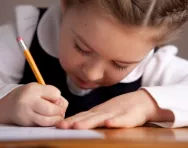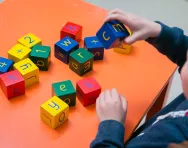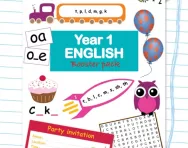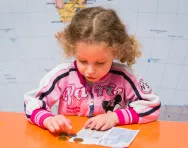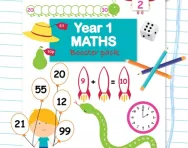TheSchoolRun.com closure date
As we informed you a few months ago, TheSchoolRun has had to make the difficult decision to close due to financial pressures and the company has now ceased trading. We had hoped to keep our content available through a partnership with another educational provider, but this provider has since withdrawn from the agreement.
As a result, we now have to permanently close TheSchoolRun.com. However, to give subscribers time to download any content they’d like to keep, we will keep the website open until 31st July 2025. After this date, the site will be taken down and there will be no further access to any resources. We strongly encourage you to download and save any resources you think you may want to use in the future.
In particular, we suggest downloading:
- Learning packs
- All the worksheets from the 11+ programme, if you are following this with your child
- Complete Learning Journey programmes (the packs below include all 40 worksheets for each programme)
You should already have received 16 primary school eBooks (worth £108.84) to download and keep. If you haven’t received these, please contact us at [email protected] before 31st July 2025, and we will send them to you.
We are very sorry that there is no way to continue offering access to resources and sincerely apologise for the inconvenience caused.
7 key areas for supporting your Year 1 child with maths and English
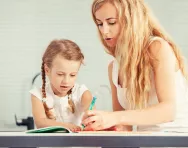
The step up from Reception to KS1 sees a reduction in learning through play and more tabletop work. This jump can be tricky for some children, while others take it in their stride.
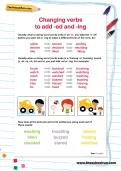
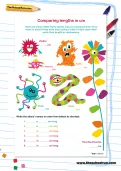
Start the Year 1 Learning Programme!
- Weekly maths & English worksheets direct to your inbox
- Follows the National Curriculum
- Keeps your child's learning on track
Whichever camp your child is in, here are some strategies for consolidating what they learn at school and making sure they feel really confident with their knowledge.
Year 1 English key area: reading and phonics
Perhaps the biggest leap in a child’s ability to read happens around this age.
Phonics (the sounds that make up words, and the alphabetical letters that make them) tend to be taught every day at school at this age, and so it’s a good idea to practise your child's phonics skills at home. TheSchoolRun has lots of useful phonics worksheets, but also, whilst you’re reading with them, look out for common sounds and chat about any patterns.
By the end of Year 1 in phonics, most pupils are:
- Learning alternative letters for reading familiar sounds, for example: ai/ay (train/tray), oi/oy (coin/toy), w/wh(wet/when), f/ph (fish/photo)
- Learning alternative pronunciations for familiar letters, for example: i (fin/find), c (cat/circus), ow (cow/blow), ch (chin/chef)
- Learning alternative spellings for sounds, for example: r/wr(rat/wrap) n/gn/kn(nut/gnat/knit), air/ere/ear/are(pair/there/pear/ bare)
Story books tend to be the go-to when we're reading at home, but your child may prefer non-fiction, especially if they’re interested in a particular topic, or comics. Go with it and drop any book snobbery! Whatever they want to read, read – that’s where the motivation will come from, so go with that!
Out and about, there’s plenty of scope for reading wherever you are, on signs or in supermarkets – help your child to see the usefulness of learning to read and their interest will sky-rocket.
Year 1 English key area: understanding and interpreting stories
This skill is repeated throughout the primary curriculum in all year groups, so in Year 1 it’s vital to build up the skills required.
The aim here is for you to encourage concentration when your child is listening to a story. Whenever you’re reading to them, invite them to engage in discussion – cover the plot, the characters and where the story is set.
Not for every book you read together – because developing a love of reading for reading’s sake is also key – but occasionally, have them write a book review (or write one together; you can scribe while they dictate to you if needed). Get them to think about:
- Who would the book be most suited for?
- Who were the main characters in the book?
- What happened, in what order?
- Whether they would recommend the book to someone else.
Year 1 English key area: handwriting
Having legible handwriting is vital for future schooling, and in Year 1 this is something that teachers try to nail!
Having your child practise some letters at home will build on what they've been learning at school. You can find plenty of handwriting practice sheets on TheSchoolRun, as well as handwriting videos produced in partnership with the National Handwriting Association.
Writing is tiring for little hands, so don't overdo it: aim for a maximum of 5-10 minutes a day for handwriting practice activities.
Year 1 maths key area: number bonds
Number bonds are simply the pairs of numbers that make up a given number. For example, number bonds to 10 include 7 + 3 and 2 + 8.
By the end of Year 1 children are expected to know all the number bonds to 10 and all the number bonds to 20, and these are simple number facts that you can practise drilling at home.
Practice really does make perfect, so repeat, repeat, repeat – just like with times tables as they get older, number bonds are something children should know automatically without thinking or working out. You can help by testing them with some quick-fire number bond questions. Ask your child to think of as many as they can in a given time, either writing them down or shouting out.
It’s easy for them to use their hands for number bonds to 10: if they hold out both their hands and separate with a gap between any two fingers, they can see that the number of fingers on one side of the split + that on the other = 10. Revisit the activity once every few weeks.
Year 1 maths key area: counting in multiples of 2s, 5s, and 10s
In Year 1, the foundations for times tables are put in place, as children learn to count in 2s, 5s, and 10s.
At home, use visual prompts for number sequences, so they really understand what the numbers mean, and don’t just learn by rote.
So, for instance, for 2s have pairs of socks lined up, and get them to count along the row in 2s, finding out how many individual socks there are together.
For 5s they could draw around their hands, cut out and line up, counting the fingers; 10s can be pairs of hands.
Using 2p, 5p, and 10p coins is another great way to make counting more real.
Year 1 maths key area: count forwards and backwards to 100
By the end of Year 1, children should be familiar with all numbers up to 100. It’s harder than it sounds, as your child has to understand place value (i.e. the value of each digit in a number – units, tens, hundreds and so on).
You can support them by playing ‘guess the number’: think of a number between 0 and 100 and encourage your child to ask questions to get to it (for example, “Is it bigger than 30?” “Does it have five 10s in it?”) Guess their numbers too!
Also, count everything! It sounds obvious but it really makes a difference: count steps, count cars when you go for a walk, count houses as you drive, count the cutlery.
Year 1 maths key area: understand and interpret mathematical calculations
It's likely that your child will already be able to tell you what a + and a - sign mean.
In Year 1 they start to write out calculations formally using mathematical symbols, and should have an understanding of what each symbol represents. You'll find lots of Year 1 maths worksheets and activities on our Y1 maths hub, so you can select what you need for your child.
Many children thrive on learning through play, so ask them to roll a die twice and add those two numbers together, using the proper symbols. You can also make Bingo cards with addition calculations on and ask them to place the numbers that are the answers on top.
Have plenty of tangible objects for them to visualise the calculations with, too – anything works, from buttons and toys to raisins or chocolate buttons!
